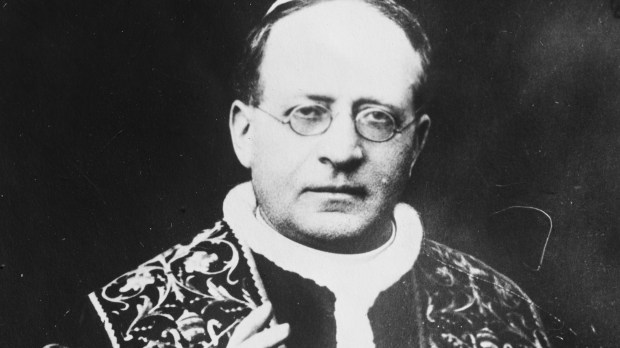Pope Pius XI reigned between two World Wars, beginning his pontificate on February 6, 1922, and dying on February 10, 1939. While he may not be among the best known popes of the 20th century, he did have the opportunity to beatify and canonize St. Thérèse of Lisieux.
According to St. John Paul II in his apostolic letter, Divini Amoris Scientia, Pius XI was especially fond of the “little flower.”
Pius XI, who considered Thérèse of Lisieux the “Star of his pontificate,” did not hesitate to assert in his homily on the day of her canonization, 17 May 1925: “The Spirit of truth opened and made known to her what he usually hides from the wise and prudent and reveals to little ones; thus she enjoyed such knowledge of the things above — as Our immediate Predecessor attests — that she shows everyone else the sure way of salvation.”
St. John Paul II also noted that, “On the occasion of both her beatification and canonization, Pius XI wished to expound and recommend the Saint’s doctrine, underscoring her special divine enlightenment and describing her as a teacher of life.”
In his homily for her canonization, Pius XI went so far as to recommend that everyone should abide by her “little way.”
If everyone follows this path of spiritual childhood, everyone will see how easily reformation of human society can be achieved, which we have proposed since the beginning of our pontificate.
We, therefore, adopt as our own the prayer of the new St. Thérèse with which she ends her invaluable autobiography: “O Jesus, we beseech Thee to cast Thy glance upon the vast number of little souls, and to choose in this world a legion of little victims worthy of Thy love.” Amen.
We can be ever grateful to Pope Pius XI for choosing St. Thérèse to be his “star,” spreading her “little way” to the entire world.



